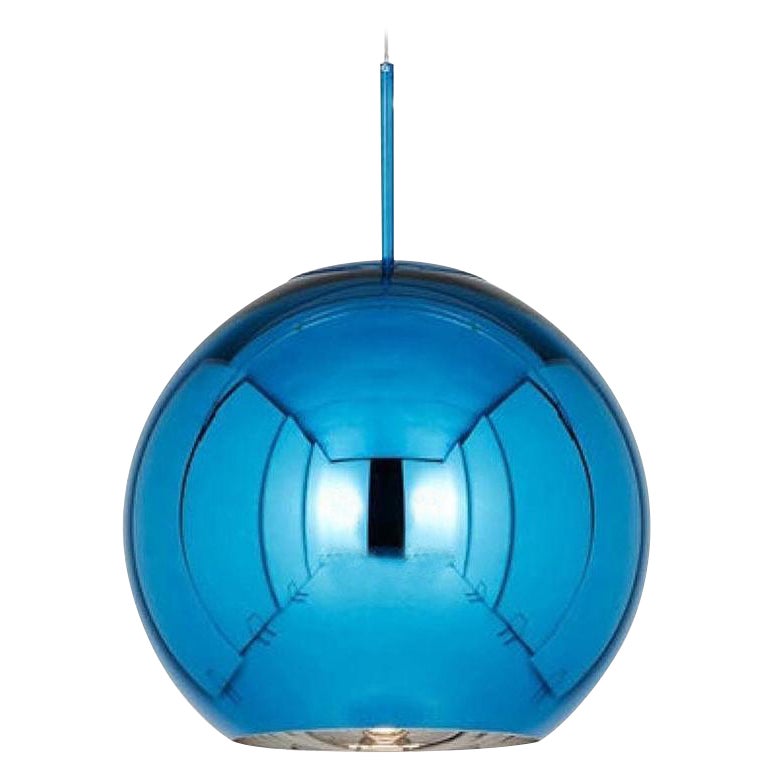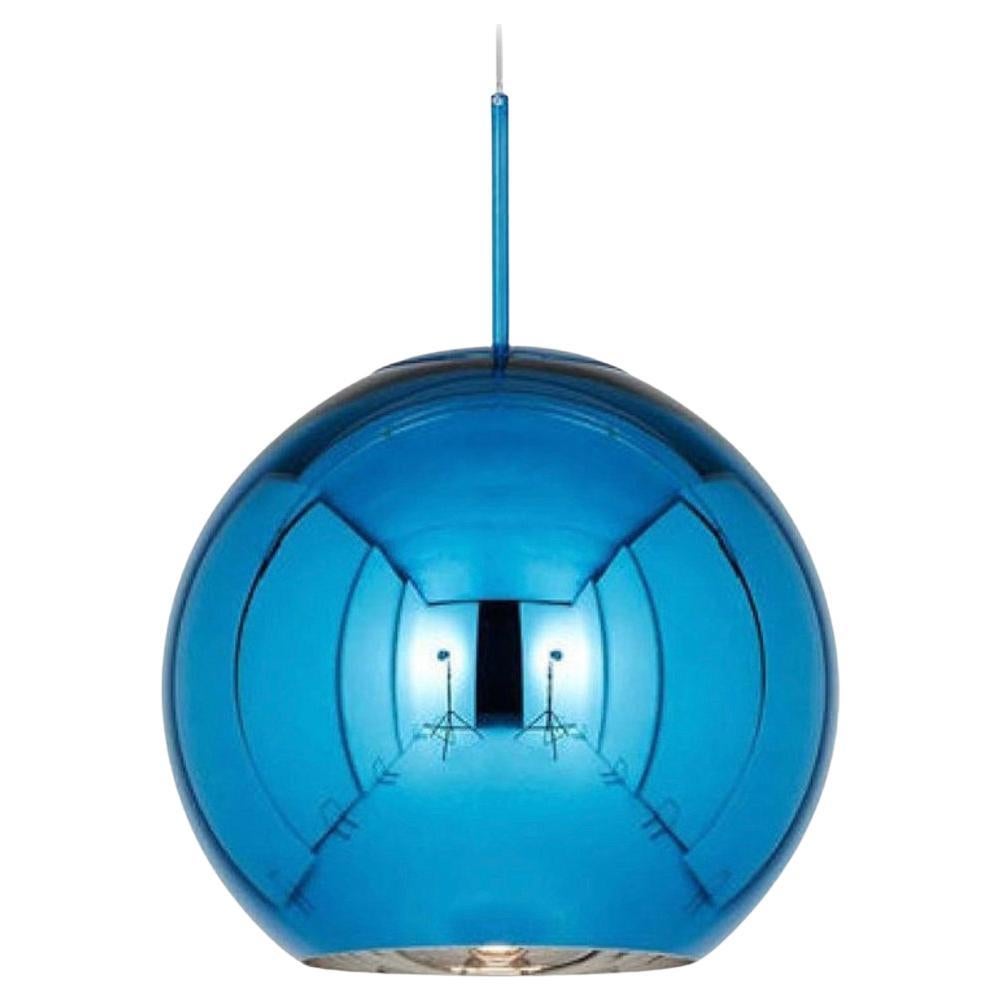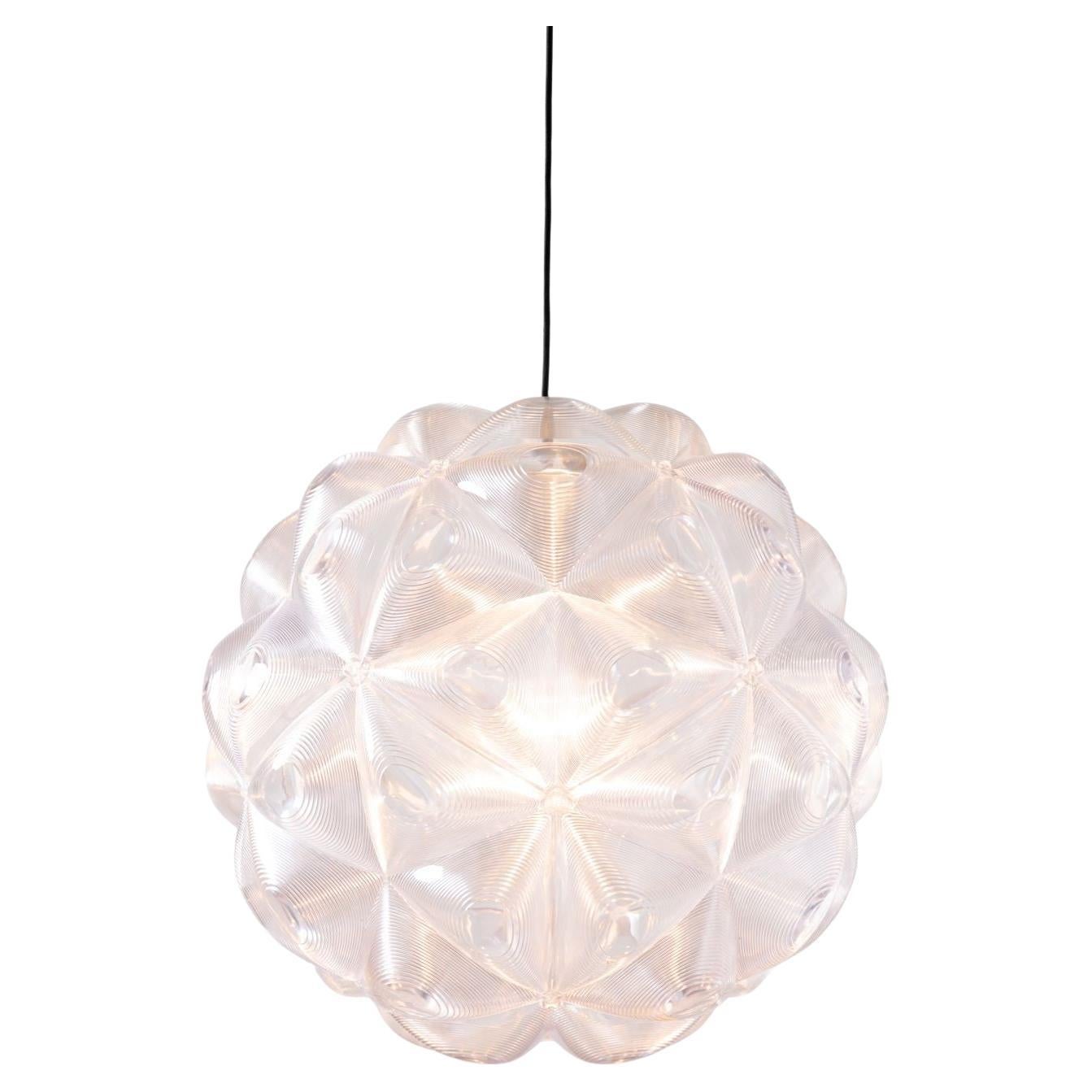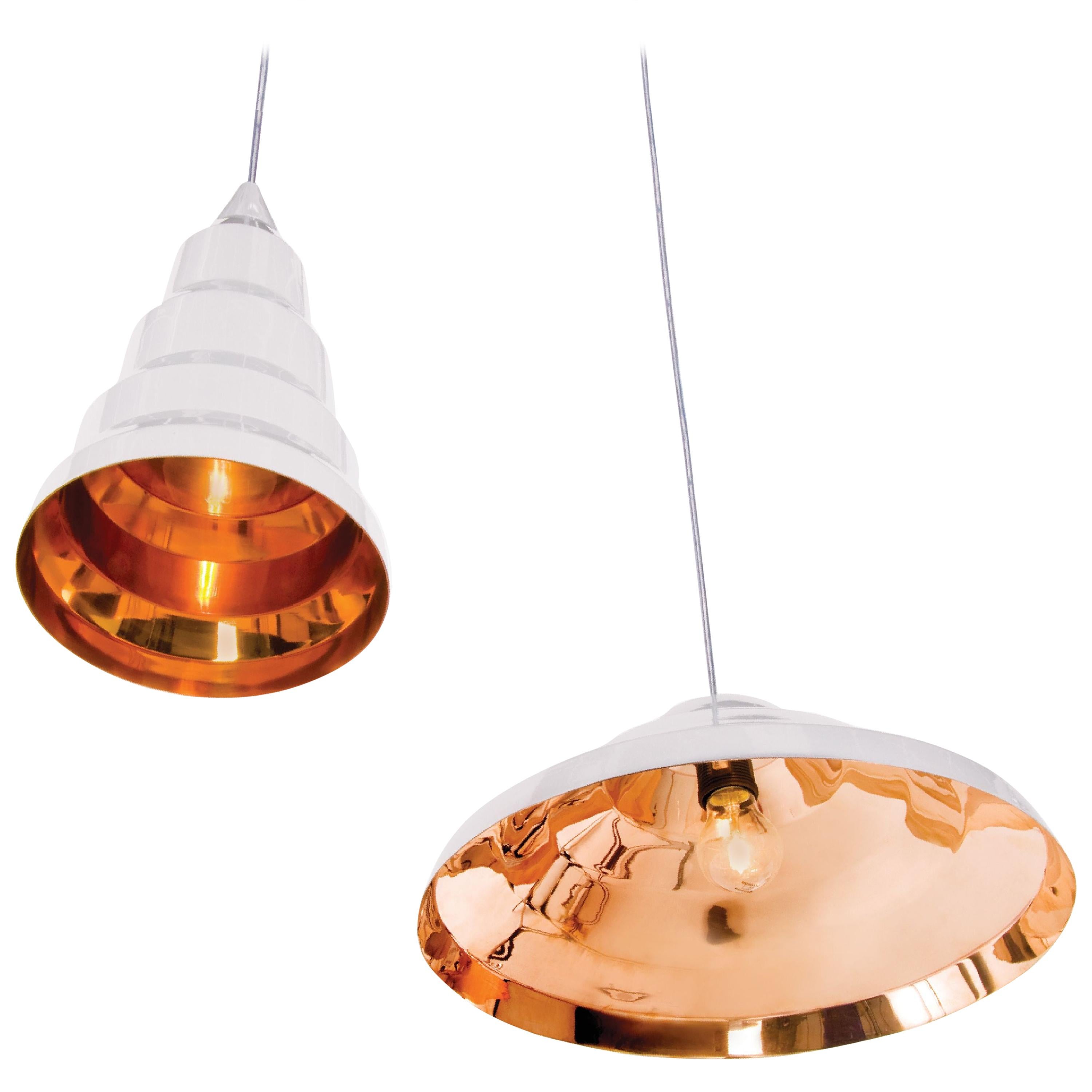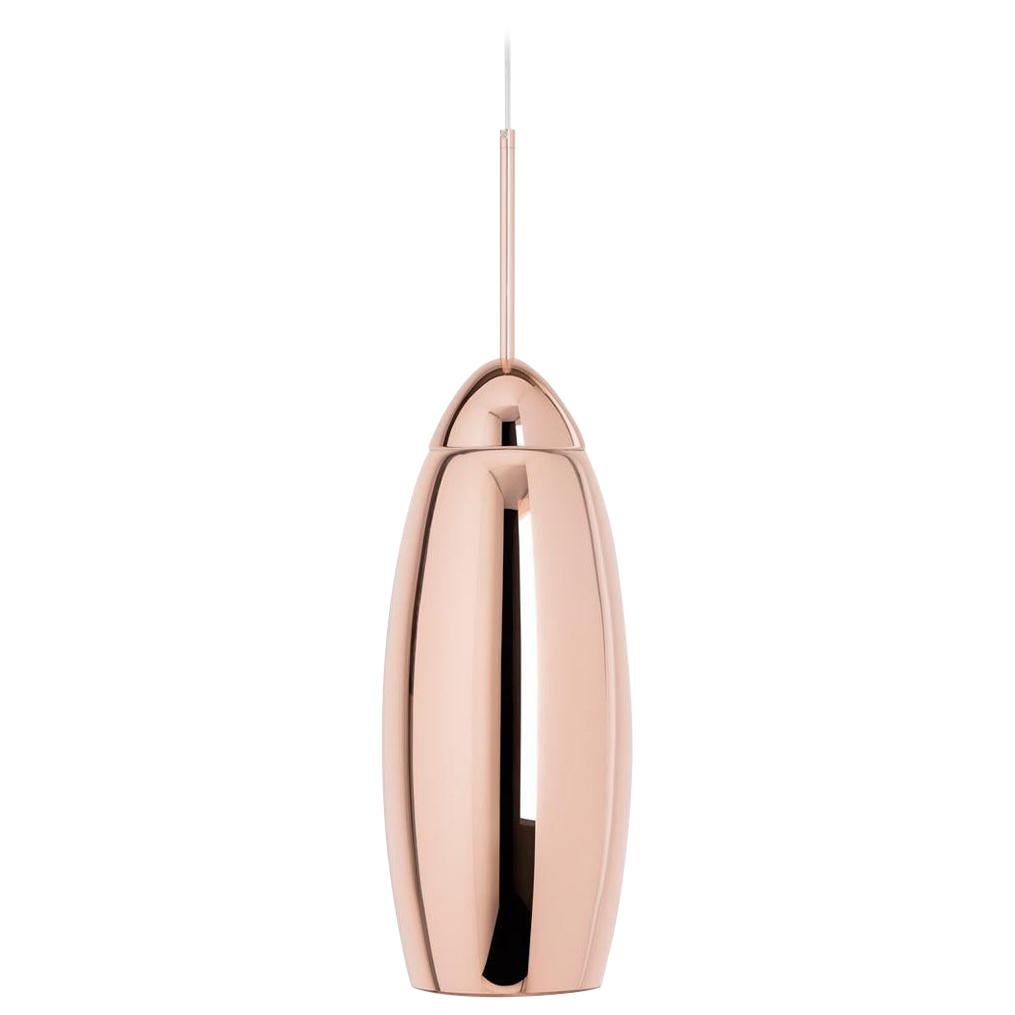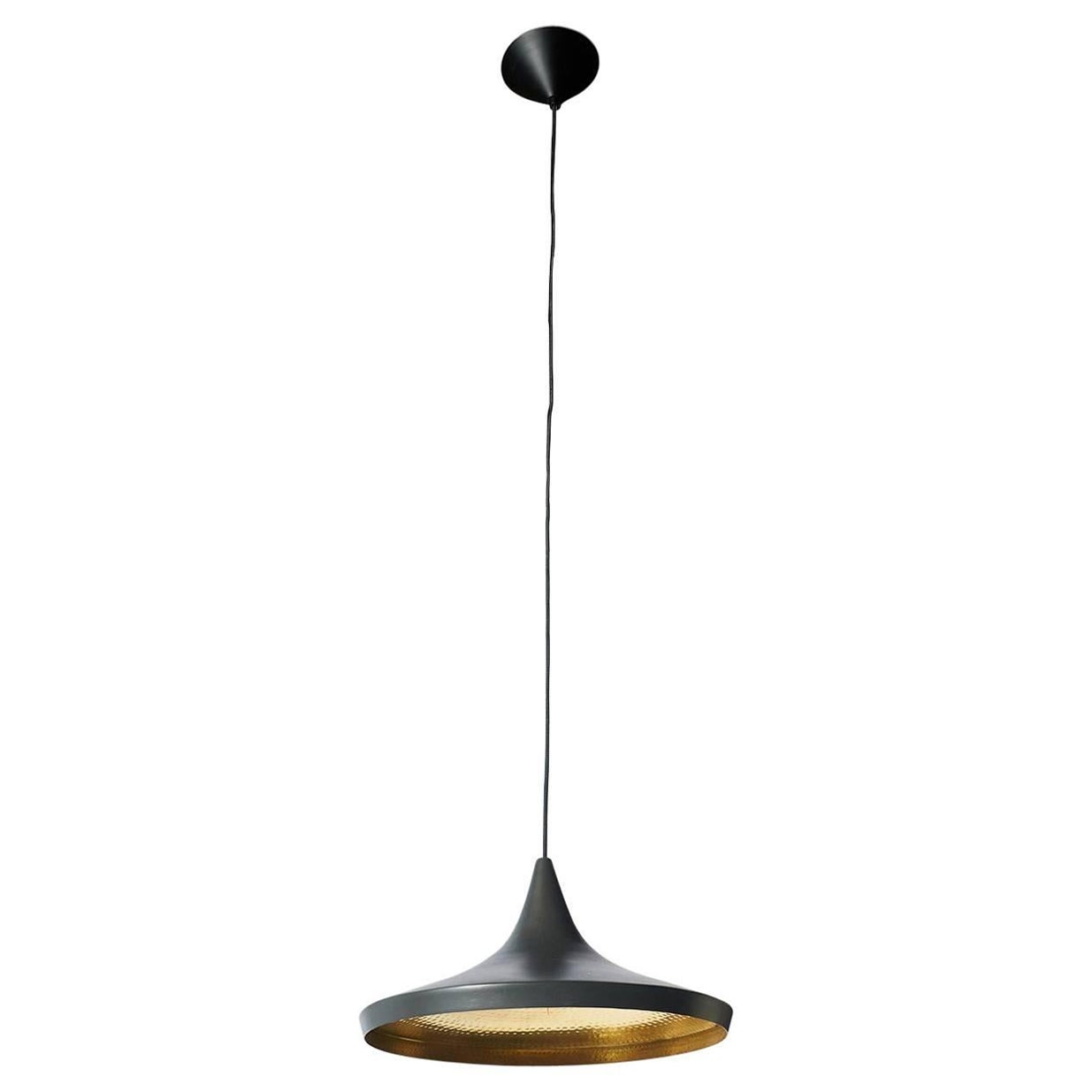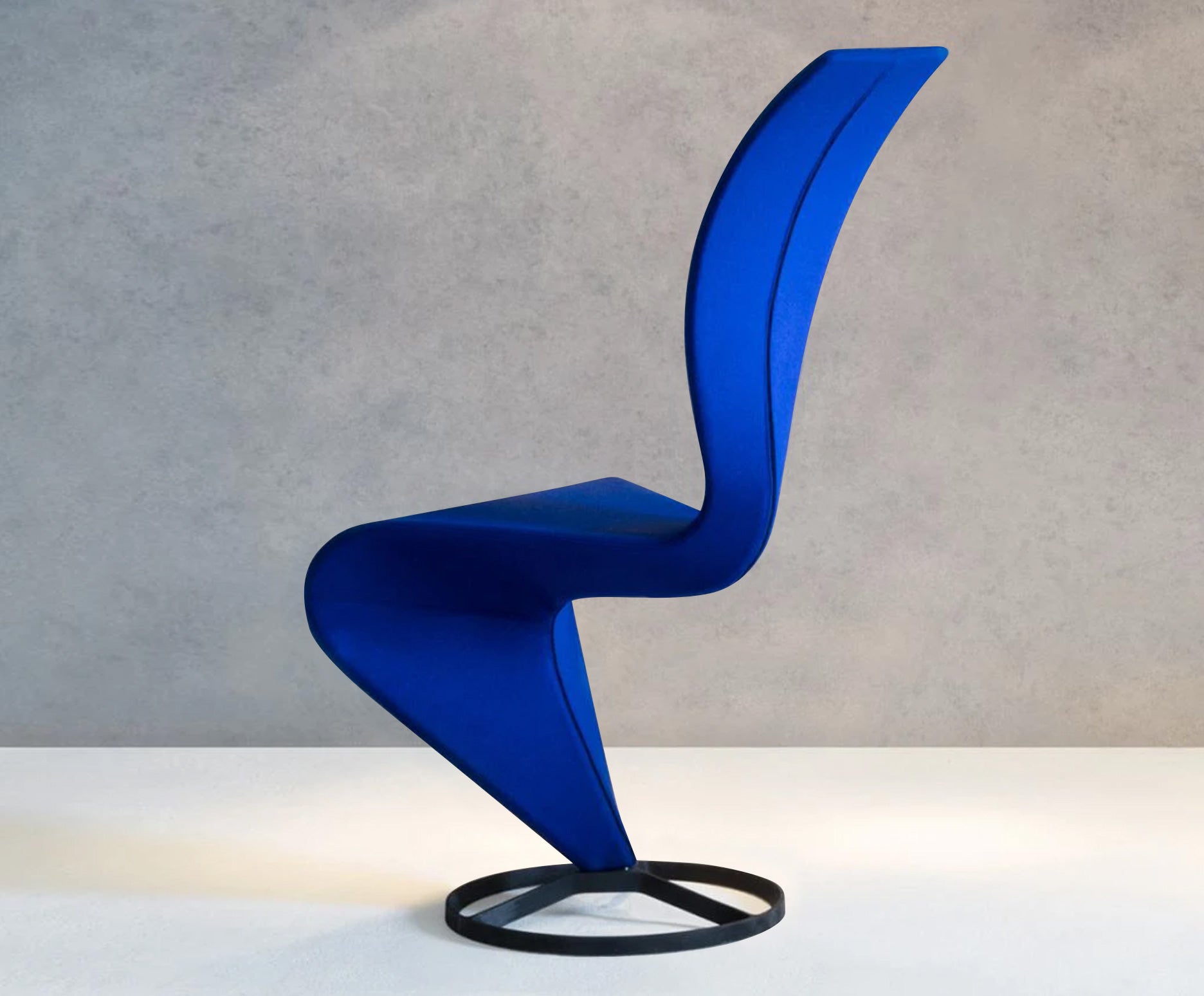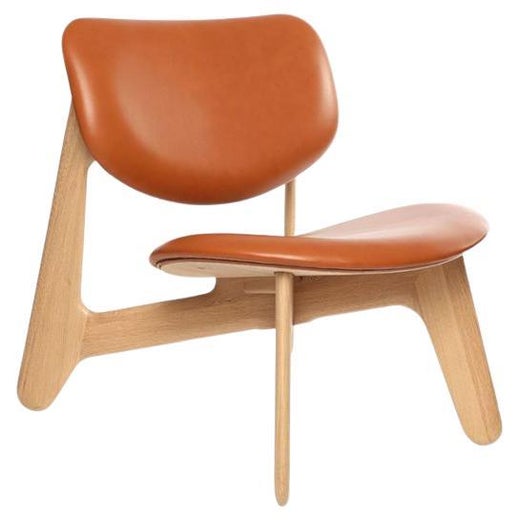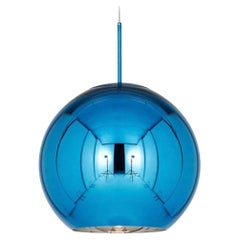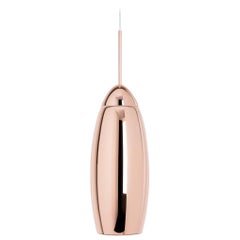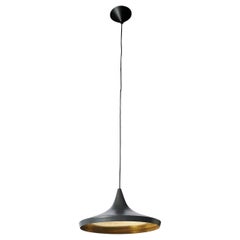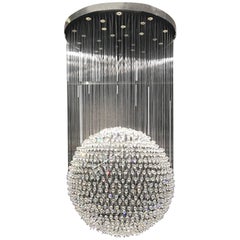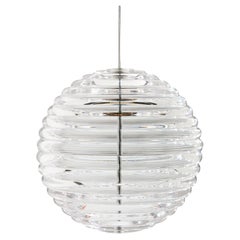Custom Tom Dixon Linear Pendant Chandelier Set of 5, Copper and Blue
About the Item
- Creator:Tom Dixon (Designer, Manufacturer)
- Design:
- Dimensions:Height: 20 in (50.8 cm)Diameter: 20 in (50.8 cm)
- Sold As:Set of 6
- Power Source:Hardwired
- Lampshade:Included
- Style:Organic Modern (Of the Period)
- Materials and Techniques:
- Place of Origin:
- Period:
- Date of Manufacture:2018
- Condition:In boxes, never installed.
- Seller Location:Brooklyn, NY
- Reference Number:1stDibs: LU4190341659272
S-Chair
Seeming to defy gravity, the S-chair springs upward from its base in a sinuous, fluid flourish. It’s a sculptural yet practical masterpiece by British designer Tom Dixon (b. 1959), who saw it go into production through a collaboration with Italian manufacturer Cappellini in 1991. It began as a sketch that had bird-like qualities.
“I have often been asked what the inspiration was behind the S-chair and, honestly, the only memory I have is of drawing a small doodle of a chicken . . . and thinking that I could make a chair from it,” said Dixon.
Born in Tunisia, Dixon moved to England as a child and enrolled in the Chelsea College of Arts at 18. He got into a motorcycle accident, dropped out and decided to pursue music with his band Funkapolitan instead of returning to school. He pivoted to design soon afterward in the mid-1980s, when he taught himself to weld. It was then that he built his first S-chair prototype made from a welded frame and upholstered with woven marsh straw.
“My slightly more successful designs seem to be ones that can be read in different ways, often quite opposite to their original intent,” said Dixon. “If the original departure point for the S-chair for me was a chicken, it has often been described by others as a female form, by some as a flame or, frequently, as a 1960s-influenced Pop object.”
It’s hard to deny a connection to mid-century modern design, however — a cursory glance at Verner Panton’s Panton chair from 1967, for example, reveals a cantilevered, free-flowing form similar to that of Dixon’s chair. But the furniture maker distanced himself from such designers with his rough-around-the-edges approach — a DIY attitude that softened somewhat when Dixon went to work for Cappellini in the late 1980s. In the case of the S-chair, it is still available in the original straw upholstery as well as in leather, stretchy fabrics and wicker.
Dixon would go on to become head of design and then creative director of furniture company Habitat. In 2001, he was awarded the Order of the British Empire by Queen Elizabeth for his services to design. Dixon established his own eponymous firm in 2002. His furniture, including the revered S-chair, is held in the collections of many museums around the world.
Tom Dixon
Artistic, innovative and entrepreneurial, the self-taught creator Tom Dixon has been a contemporary design-world maverick for more than three decades. From his revolutionary art-meets-design projects of the 1980s and throughout his dynamic and influential career as a designer of furniture, housewares and interiors, the only consistent note has been change. Dixon’s chief fascination is exploring new materials and new ways of constructing things.
Dixon was restless even as a young man. He enjoyed ceramics and drawing in high school but later dropped out of the Chelsea School of Art in London. While repairing his motorcycle in 1983, Dixon learned how to weld and took to the craft. He began making what he has called semi-functional objects from scrap metal (sometime as performance art in a nightclub), then formed a furniture studio–cum–think tank called Creative Salvage. Amid the ritzy excess of the ’80s, Dixon — along with designers such as Tejo Remy and Ron Arad — forged a new, attention-getting aesthetic with furniture made from found materials.
In 1987, Dixon began working for the Italian furniture manufacturer Cappellini, which put his best-known design, the slender, sinuous S chair, into production, followed by such pieces as the Pylon chair (1992), a wire lattice that resembles electrical transmission towers. Starting in the 1990s, Dixon expanded his interests rapidly. He started a company to manufacture the stackable plastic Jack light; joined the housewares retailer Habitat as creative director; and breathed new life into Artek, the venerable Finnish maker that Alvar Aalto and his wife Aino helped cofound. Since 2002, Dixon has run his namesake company fabricating furnishings from novel materials like brass foil-clad wood and “vacuum-metalized” glass.
The hallmark of Dixon’s design is his captivation with the process of creating pieces such as chairs, tables and lighting fixtures. “A kind friend once described me as a ‘vertebrate designer,’” Dixon has said. “That means that I design from the bones outwards and am not really interested in surface.”
Classic Dixon pieces are those that exhibit the manner of their making — from his early work in welded scrap metal to the woven rattan seats and backs of his Fat chair for Cappellini. There are two ways to approach Dixon designs: as a collector, or as a decorator. The former will seek Dixon’s one-off and limited edition works and prototypes. These historical artifacts carry high prices that range from around $8,000 to $50,000 and above. Those more interested in a dynamic look will find that manufactured Dixon designs — such as his Jack lights or his Melt pendant — can be found for prices that range from about $300 to $1,000. Either way, as you will see on 1stDibs, the designs of Tom Dixon have a singular allure that makes them a noteworthy element in any room.
- ShippingRetrieving quote...Shipping from: Brooklyn, NY
- Return Policy
More From This Seller
View All21st Century and Contemporary English Organic Modern Chandeliers and Pen...
Acrylic
21st Century and Contemporary English Organic Modern Chandeliers and Pen...
Acrylic
21st Century and Contemporary Unknown Chandeliers and Pendants
Copper
21st Century and Contemporary Unknown Modern Chandeliers and Pendants
Acrylic
21st Century and Contemporary Unknown Modern Chandeliers and Pendants
Copper
21st Century and Contemporary Unknown Minimalist Chandeliers and Pendants
Copper
You May Also Like
21st Century and Contemporary Modern Chandeliers and Pendants
Acrylic
Vintage 1950s English Modern Chandeliers and Pendants
Brass
Early 2000s British Modern Chandeliers and Pendants
Crystal, Chrome
21st Century and Contemporary British Modern Chandeliers and Pendants
Glass
21st Century and Contemporary Modern Chandeliers and Pendants
Plastic
21st Century and Contemporary British Modern Chandeliers and Pendants
Glass
Recently Viewed
View AllRead More
The Married Collectors behind Stockholm’s Newest Design Museum
Kersti Sandin and Lars Bülow want their new endeavor to educate both students and professionals about furniture design.
How the Anglepoise Lamp Went from Desktop Companion to Hollywood Icon
Since its 1934 debut, the ingenious task light has become one of the most celebrated examples of industrial design.
